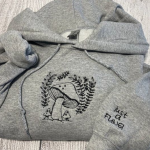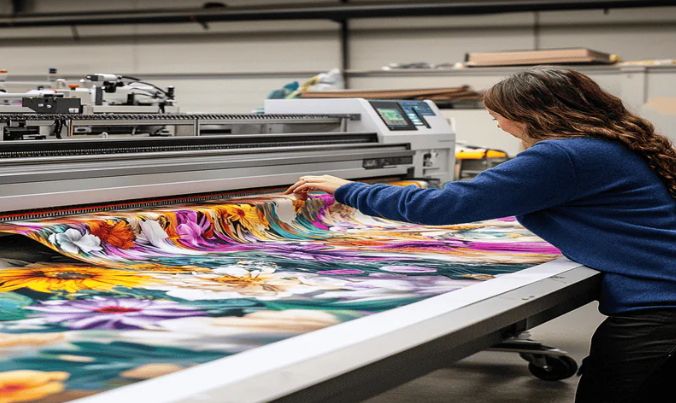In the field of sportswear customization, choosing the right printing process is like injecting vitality into clothing. As a experienced customized jerseys supplier, we are well aware that from professional uniforms of professional teams to limited-edition peripherals of start-up brands, the choice of printing technology is essentially a multi-dimensional trade-off between durability, cost control and design freedom.
This article will systematically dismantle the current 7 major mainstream printing processes (including cutting-edge hybrid technologies in 2025) and draw a complete roadmap for you from technical principles to business decisions – whether you are a company that needs to place bulk orders or a trendy brand manager who pursues breakthrough designs, you can find printing solutions that accurately match your needs here.
Types of Printing Method
|
Printing Method |
Ideal For |
Durability |
Setup Time |
Fabric Compatibility |
Example Use |
|---|---|---|---|---|---|
|
Screen Printing |
Bulk, bold designs |
Very High |
High |
Most |
Team jerseys, bulk uniforms |
|
DTG printing |
Detailed, small runs |
Moderate |
Low |
Cotton |
Numbered player shirts, fan gear |
|
Dye Sublimation |
Polyester, all-over |
Very High |
Moderate |
Polyester |
Pro cycling kits, e-sports jerseys |
|
DTF Printing |
Colorful, varied fabrics |
High |
Moderate |
Most fabrics |
custom athletic tees, warmups |
|
Heat Transfer |
Photos, small batch |
Low |
Low |
Most |
Event shirts, coach staff gear |
|
Puff Printing |
3D, bold elements |
High |
High |
Cotton, blends |
Statement logos, special editions |
|
Embroidery |
Logos, uniforms |
Very High |
High |
Heavier fabrics |
Club crests, badge patches |
Screen Printing (Silkscreen)
Screen printing is a top choice in the Sportswear world. Its prints hold up to lots of washing and tough use. If you need bold, bright designs on cotton or technical fabrics, screen printing delivers great color, even on dark garments. The main drawback is the high setup cost, so I don’t suggest it for small orders or designs with complex color fades. For bulk, durability, and a good price, it’s a solid choice.

Direct-to-Garment (DTG) Digital Printing
If you want to create personalized sportswear or small orders with photo-quality detail,DTG printing is excellent. It handles complex, multi-color graphics and sharp logos very well. The prints feel soft, and the colors look vibrant. The durability isn’t quite as good as screen printing. You might see wear after 25 to 40 intense washes. However, the setup is fast and affordable, which makes it perfect for one-off custom shirts or fan gear.
Dye Sublimation
Dye sublimation is the king for polyester sportswear. The process fuses the ink directly into the fabric fibers. This gives it amazing longevity, and it can look great even after 100+ washes. It’s perfect for all-over, edge-to-edge graphics. You often see it on e-sports jerseys and professional cycling kits. You can only use sublimation on polyester or polymer-coated items. It’s also not the cheapest option for small orders.
Direct-to-Film (DTF) Printing
DTF printing is a very flexible solution. It works on a wide range of fabrics like cotton, polyester, and blends. It does a fantastic job of creating colorful, detailed designs that hold up well over time. They resist wear and color loss. The setup costs are reasonable, so DTF is a great option for small and mid-sized orders. Custom athletic tees, warmup gear, and colorful staff uniforms all turn out great with this method.

Heat Transfer Printing
Heat transfer printing is a great choice for event shirts or coach gear because the setup is fast and the initial costs are low. This method works on most fabrics and can handle photos or complex art with ease. Durability can vary. Standard transfers might crack or fade after many washes, which is more common on larger graphics. HTV is more resilient, but it still doesn’t match the toughness of sublimation or embroidery for heavy use.
Puff Printing
Puff printing because it can add a 3D texture to your clothes. This tactile effect makes logos and graphics pop. It’s mainly used on cotton or blends. When done well, it has an impressive lifespan. It’s a great choice to make a bold statement on special editions or for unique team branding.
Embroidery
Designs stitched with thread are very resistant to washing and rubbing. They hold their look for years. This makes it an ideal choice for club crests, patches, and logos on heavier fabrics like jackets or polo shirts. You should expect higher costs and a longer setup time.

Which Method Lasts Longest
The printing method you choose for sportswear has a huge impact on durability. Your choice determines how designs look after many seasons, washes, and rough use. I’ll break down how each technique performs for long life and tough conditions.
Top Picks for Durability
Embroidery and dye sublimation are recommended if wear and tear is your biggest worry.
-
Embroidery is not just for fancy polos or club logos. The thick threads are stitched deep into the fabric. They often last longer than the garment itself. I’ve seen uniforms and workwear survive hundreds of washes, even in industrial machines. It’s a heavy and tough option, but I don’t recommend it for thin activewear. The weight can pull down the fabric or cause chafing.
-
Sublimation printing is the best choice for modern sports jerseys and polyester gear like Dri Fit shirts. With this method, the ink becomes a part of the fabric itself. It’s infused, not just sitting on top. This means the logo colors resist fading, cracking, and peeling. They can handle over 100 tough washes. Your prints will look sharp, game after game. This is why you see full-wrap sublimation on elite soccer and e-sports jerseys.
High-Quality Classic Options
You shouldn’t overlook screen printing. It’s a great for large orders. It creates strong prints that don’t crack easily and hold their color on cotton and blends.If you care for them the right way, screen prints can outlast other methods.Good inks and thick color layers give team t-shirts and club gear the strength to last for seasons of intense play.
Newer, Versatile Methods
DTF (Direct-to-Film) printing is becoming popular because it’s both flexible and tough.It puts ink on many types of fabric, including cotton and synthetics. For trendy team shirts or bright warm-ups, you get great color that also lasts.

Related Reading:The Best Fabrics And Materials for High Quality Custom Embroidered Hoodies


Hybrid & Emerging Methods
Hybrid printing change how we customize sportswear. It offers amazing durability and great creative freedom. It works by combining the strength of screen printing with the detail of digital methods like DTG or DTF. It’s the best option if you need sportswear that lasts and also looks fantastic.
Hybrid Printing for Sportswear
Some purely digital prints leave a sticky film after pretreatment. Hybrid methods don’t need this. This makes the shirt feel softer and more natural, which is very important. Comfort is just as important as how it looks.The prints kept their shape and color after many washes, lots of stretching, and general wear. This is perfect for sports teams that need a look that is both sharp and durable.
-
Incredible Durability with Bright Colors: A hybrid print starts with a screen-printed base layer. This gives the design a strong, wash-resistant foundation. It helps lock in color and prevent cracking or fading.
-
Fast and Smart Production: This method because it’s much faster than older techniques. Hybrid systems make production smooth. You can get large orders for teams or events done with fast turnarounds.
-
Lower Costs for Small Orders: Hybrid printing for smaller orders or single items.
2025’s Most Promising Printing Trends
-
DTF and Screen Print Mix: Print shops need more speed and flexibility to combine DTF and screen printing into one process. The newest DTF printers create bright, detailed designs. They work great even on tough fabrics like polyester or dark clothes.
-
Sublimation Mixes for Pro Sportswear: Some brands using a new technique for high-performance gear. They start with all-over sublimation for a light base. Then, they add DTF or screen printing to areas that get a lot of wear. This mix gives athletes the snug fit they need, plus durable color where it counts.
-
Eco-Friendly Hybrid Ideas: Top companies like Epson, Roland, and Brother making new hybrid machines. These machines use water-based or eco-friendly inks. This allows you to sell sustainable clothing that still performs well and lasts a long time.



Related Reading:Is the Fitness Compression Clothing the Best Choice for Your Gym


What Makes Sportswear Prints Last?
Environmental Exposure
Exposure to sunlight, sweat, and rain will make prints fade faster. Frequent, rough washing does the same. For instance, an outdoor banner might last 1–5 years. An indoor jersey can last ten years if you take care of it.
Garment Care
Washing garments inside out. Use a gentle cycle with cold water and avoid harsh detergents.Air dry if possible. The high heat from a dryer or iron will speed up fading and peeling.If you follow these steps, DTF and DTG prints can look good for 50–100 washes.
Fabric Type and Quality
The fabric of the shirt makes a huge difference. Pure cotton works best for DTG printing. The ink soaks in deep, so the design lasts. For synthetic or blended fabrics, Dye sublimation for durability. It’s recommend investing in quality fabric. It helps prints resist cracking and stretching from hard use and many washes.
Printing Method & Ink Quality
Embroidery and sublimation are recommendations. They often last longer than the garment itself.Screen printing can stay bright for 5–10 years if done with quality ink and curing. The process here is key. Inks that are not cured well will peel and crack.For DTF and DTG, if you use good inks and wash with care, you can expect up to 100 wears or more.
Conclusion
After testing different printing methods, I’ve learned that the best choice depends on your specific needs and budget. Whether you’re printing team jerseys or custom fan gear, there’s a method that fits perfectly. The key is matching your printing choice to your fabric, design complexity, and expected lifespan. With proper care and the right technique, your sportswear can look professional and vibrant for years to come.
As a professional custom sportswear supplier, Berunwear can customize your clothing according to your actual needs. Whether it is customized jerseys or customized activewear, etc., you can choose the printing process. Click here to start your custom journey.
